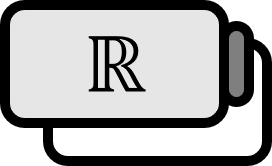Newly Defined Continuous Functions in University Mathematics
Definition
Let’s say a set that is not an empty set is called $E \subset \mathbb{R}$, and $f : E \to \mathbb{R}$. If there exists $\delta>0$ for every $\varepsilon > 0$ such that
$$ | x - a | < \delta \implies | f(x) - f(a) | < \varepsilon $$
is satisfied, $f$ is said to be continuous at $a \in E$, and if it is continuous at every point of $E$, $f$ is called a continuous function.
Explanation
When defining continuity in high school,
- The function value $f(a)$ exists.
- The limit $\lim \limits_{x \to a}$ exists.
- $f(a) = \lim \limits_{x \to a}$ is true.
When these three conditions are met, $f$ is said to be continuous at $x = a$. If you’ve accepted the epsilon-delta argument, you’ll realize that this definition isn’t really different from what is taught in high school.
The fact that whenever $| x - a | < \delta$, $| f(x) - f(a) | < \varepsilon$, means if $x$ moves very slightly around $a$, then $f(x)$ will also move very slightly from $f(a)$. In other words, if you change $x$ and put it into $f$, the function value does not change ‘drastically’, i.e., discontinuously. In other words, continutity, if imagined as a graph, means ’not breaking’.
Among high school students, there are quite a few who intuitively accept ‘unbroken’ functions as continuous functions. As a counterexample, $f(x) := {{ 1 } \over { x }}$ is broken at $x=0$ but is continuous at every point in the domain $\mathbb{R}^{ \ast } = \mathbb{R} \setminus \left\{ 0 \right\}$, therefore, it is indeed a continuous function. Usually, not knowing wouldn’t affect life, but if you didn’t know, take this chance to clearly understand the concept.
Theorem
That $f$ is continuous at $a \in E$ is equivalent to the following.
$$ \lim \limits_{n \to \infty} x_{n} = a \implies \lim \limits_{n \to \infty} f( x_{n} ) = f(a) $$
The theorem indicates that due to the continuity of the function, $\lim \limits_{n \to \infty}$ can move in and out of $f$. In many fields outside of mathematics, continuity is often taken for granted without proper verification, which, from a mathematician’s standpoint, should be rigorously scrutinized.
